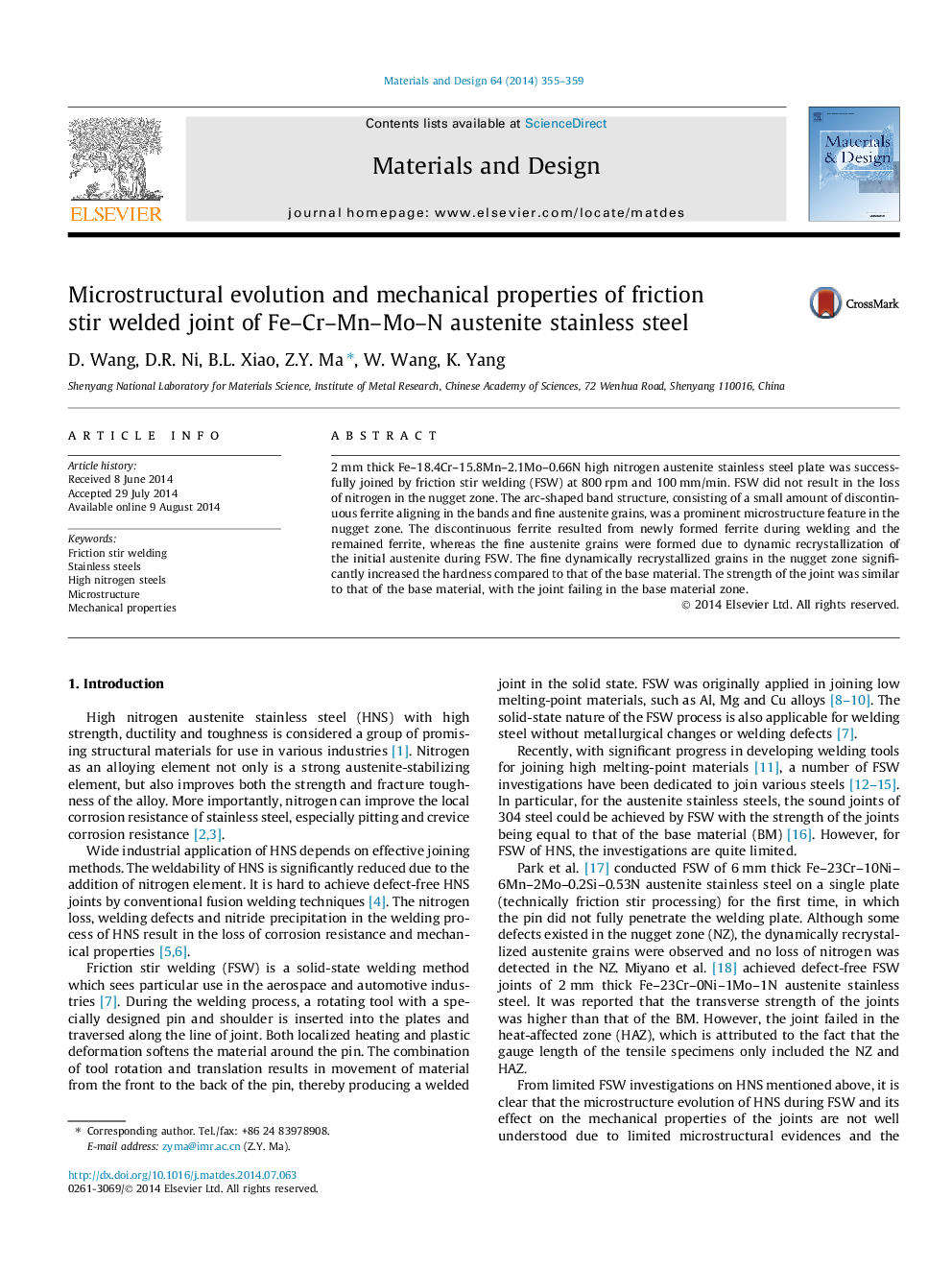| Article ID | Journal | Published Year | Pages | File Type |
|---|---|---|---|---|
| 828917 | Materials & Design (1980-2015) | 2014 | 5 Pages |
•Fe–18.4Cr–15.8Mn–2.1Mo–0.66N austenite stainless steel was joined by FSW.•The arc-shaped band structure was a prominent microstructure feature in the NZ.•The bands consisted of discontinuous ferrite and fine austenite grains.•The strength of the joint was similar to that of the base material.
2 mm thick Fe–18.4Cr–15.8Mn–2.1Mo–0.66N high nitrogen austenite stainless steel plate was successfully joined by friction stir welding (FSW) at 800 rpm and 100 mm/min. FSW did not result in the loss of nitrogen in the nugget zone. The arc-shaped band structure, consisting of a small amount of discontinuous ferrite aligning in the bands and fine austenite grains, was a prominent microstructure feature in the nugget zone. The discontinuous ferrite resulted from newly formed ferrite during welding and the remained ferrite, whereas the fine austenite grains were formed due to dynamic recrystallization of the initial austenite during FSW. The fine dynamically recrystallized grains in the nugget zone significantly increased the hardness compared to that of the base material. The strength of the joint was similar to that of the base material, with the joint failing in the base material zone.
